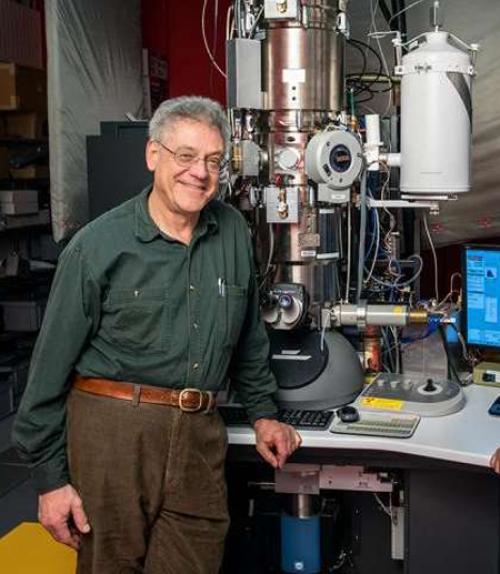In a recent research paper published in Nature, a group led by physics professors David Muller and Sol Gruner claimed a world record for electron microscope resolution using a high-powered detector and a technique called ptychography. Their technique was shown to measure down to 0.39 ångströms or 0.039 nanometers (one-billionth of a meter).
Guinness World Records has officially recognized the Cornell collaboration’s achievement, listing it alongside such notables as Robert Pershing Wadlow (at 8 feet, 11.1 inches, the world’s tallest human) and Lee Redmond (longest fingernails, with a combined length of 28 feet, 4 inches).
Gruner, former director of the Cornell High Energy Synchrotron Source, said he’d always dreamed of making the Guinness grade, but didn’t figure microscopy would be his ticket to fame.
“I always thought that I’d need to eat 40 hamburgers in five minutes or stand on one foot for days to get into the Guinness book,” he said. “Who would have thought that seeing a few atoms would do the trick?”
That brings to four the number of current Cornell University-affiliated record-holders. Muller also shares the record for thinnest glass (three atoms thick, 2013); the other records are held in part by applied and engineering physics professor Harold Craighead, who shares records for smallest replica guitar (1997) and lightest object weighed (2004). In addition, the current record for furthest distance covered by a quadruped robot (83.28 miles, in 2015) eclipsed the mark of 40.5 miles set by Cornell’s Ranger robot in 2011.
This story also appeared in the Cornell Chronicle.




